Lake Titicaca - Peru
In April-May 2004 we had our third around-the-world trip. In 54 days we travelled to Auckland, Tahiti, Easter Island,
Santiago, Lima, Arequipa, Colca Canyon, Sillustani, Lake Titicaca, Puno, Cusco, Sacsayhuman, Tambomachay, Machu Picchu, Aguas Calientes,
Sacred Valley, Ollantaytambo, Posada Amazonas, Ica, Nazca, Paracas, Ballestas Islands, Buenos Aires, Iguazu Falls, Itaipu Dam,
Rio de Janeiro, London, St. Petersburg and Singapore.
After flying from Arequipa to Juliaca and visiting the Sillustani ruins, we stayed at Puno on the edge of Lake Titicaca.
Lake Titicaca is a large, deep lake in the Andes on the border of Peru and Bolivia, often called the "highest navigable lake" in the world.
The "highest navigable lake" claim is generally considered to refer to commercial craft.
Numerous smaller bodies of water around the world are at higher elevations.
By volume of water and by surface area, it is the largest lake in South America.
Other cultures lived on Lake Titicaca prior to the arrival of the Incas.
In 2000, a team of international archaeologists found the ruins of an underwater temple, thought to be between 1,000 and 1,500 years old,
perhaps built by the Tiwanaku people.
From Puno we went on an all-day boat tip on the lake.
Firstly to the Uros Floating Islands.
These "Floating Islands" are small, man-made islands constructed by the Uros people from layers of cut totora,
a thick, buoyant reed that grows abundantly in the shallows of Lake Titicaca.
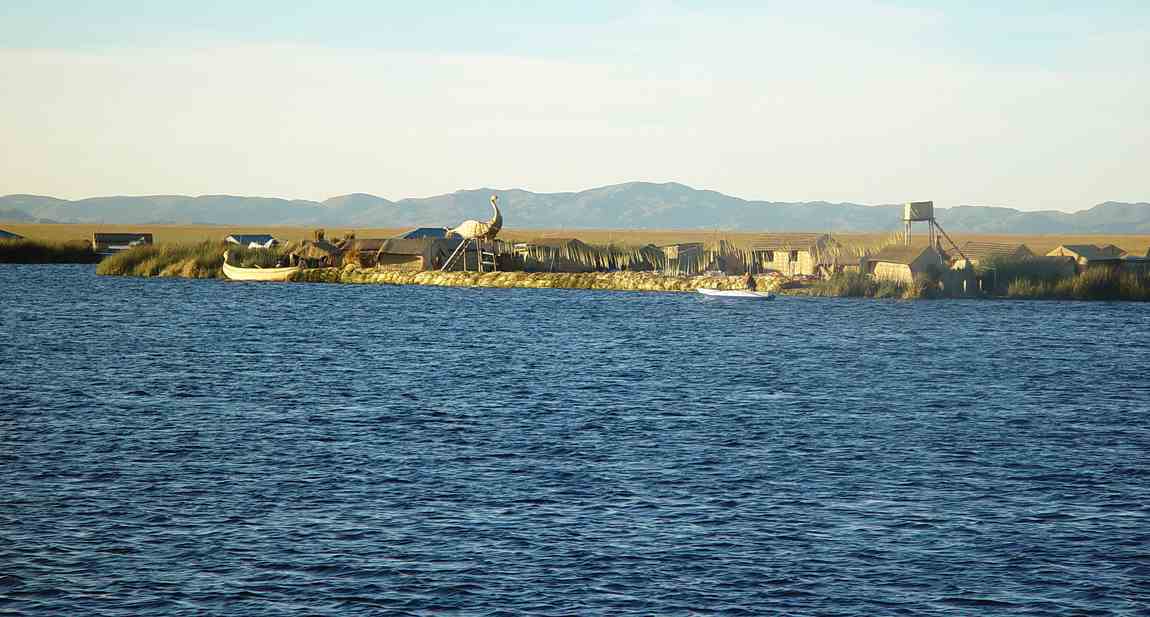
The islands are anchored and are moved from time to time.
The islands are about 4km from Puno. About 400 people live on the islands.
Always a small tribe, they began their unusual floating islands to isolate themselves from the Collas and the Incas.
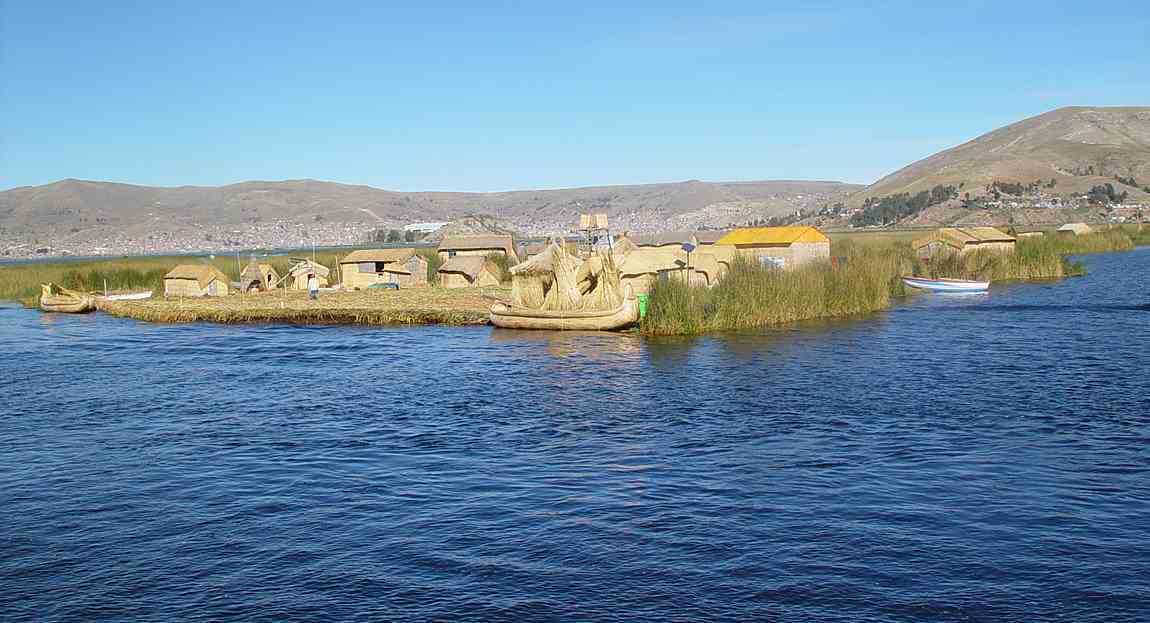
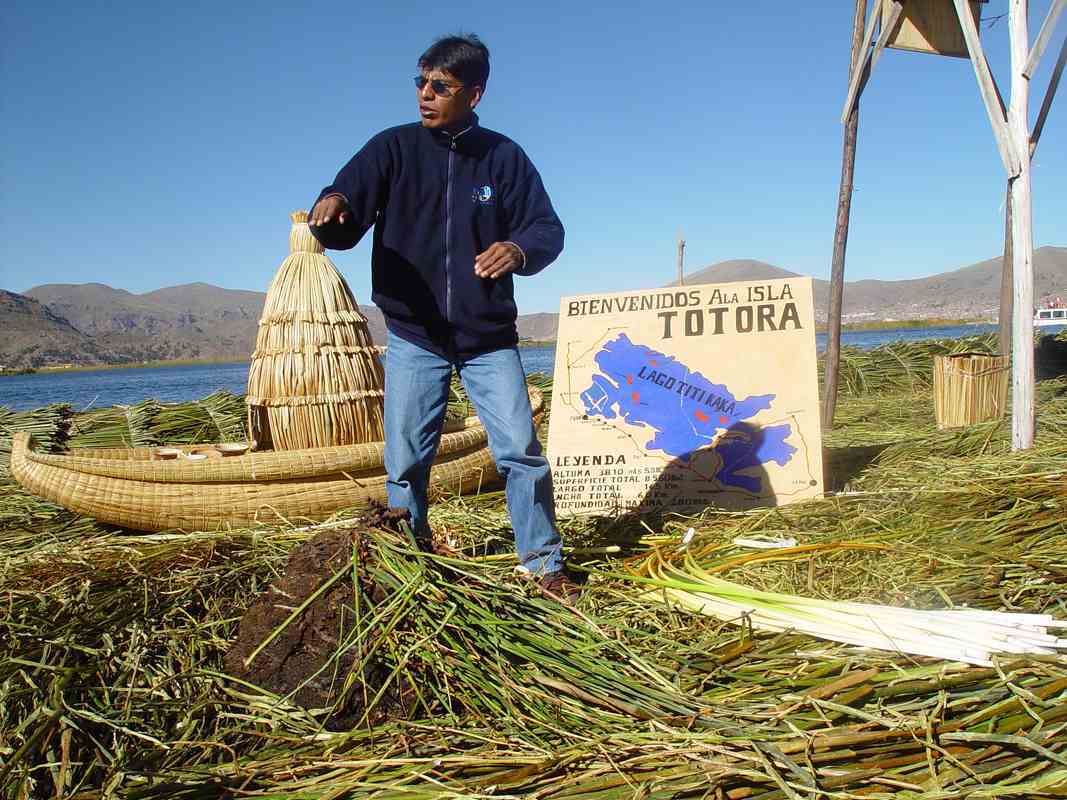
Their dwellings are also made from the totora reed.
They have a school on one of the islands. We saw the children going to school by boat.
The school boat and school.
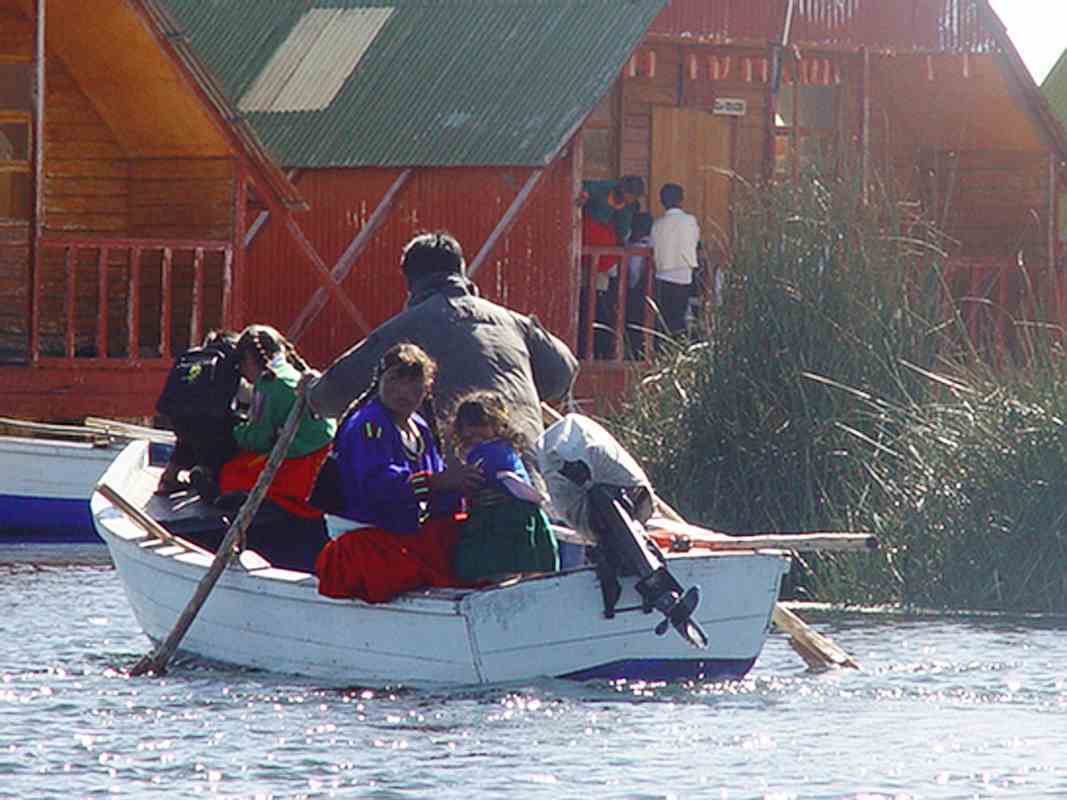
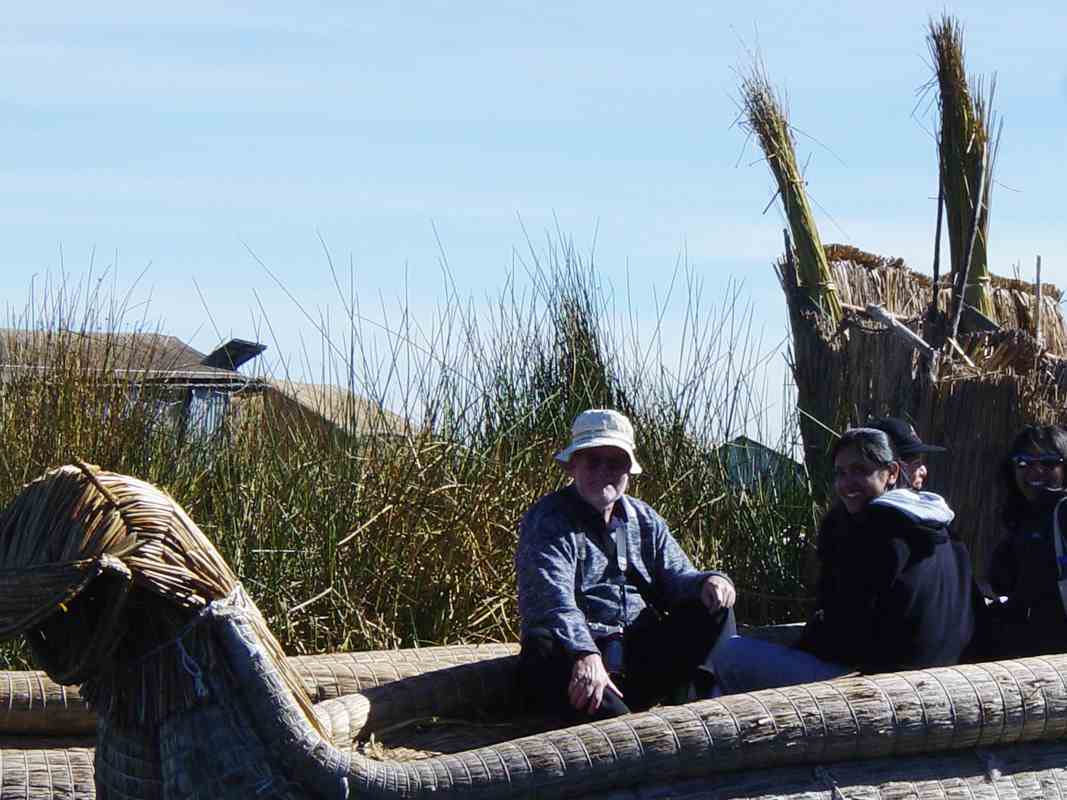
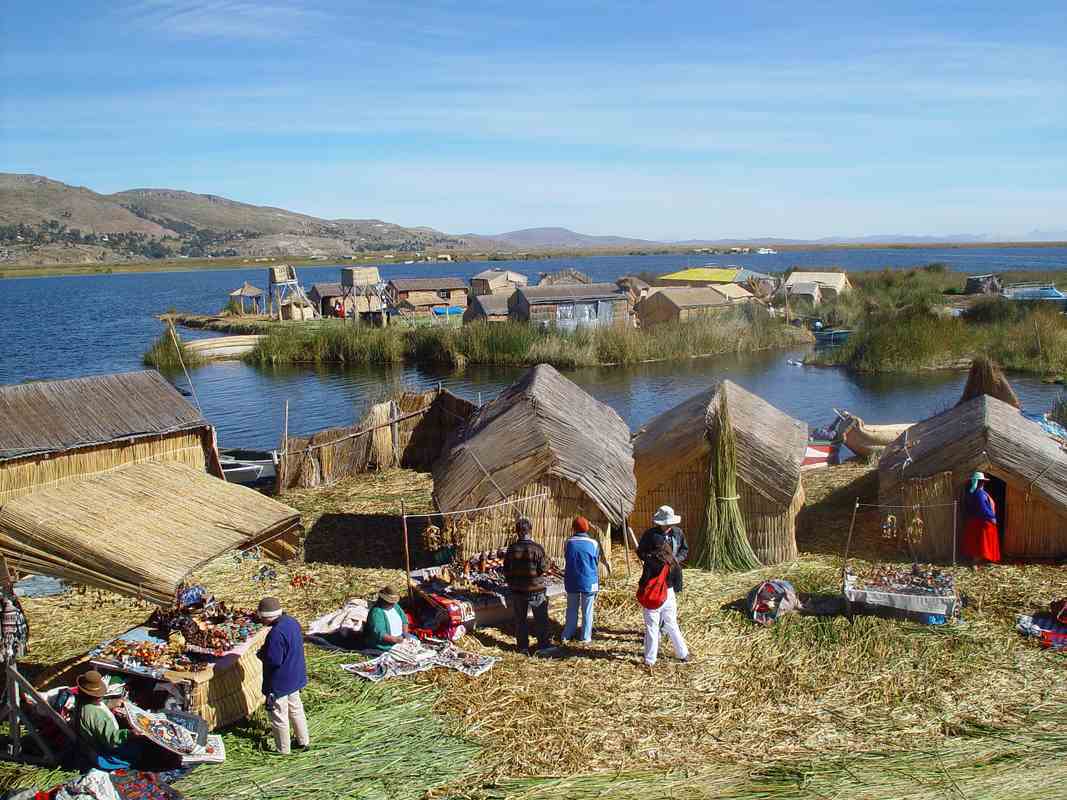
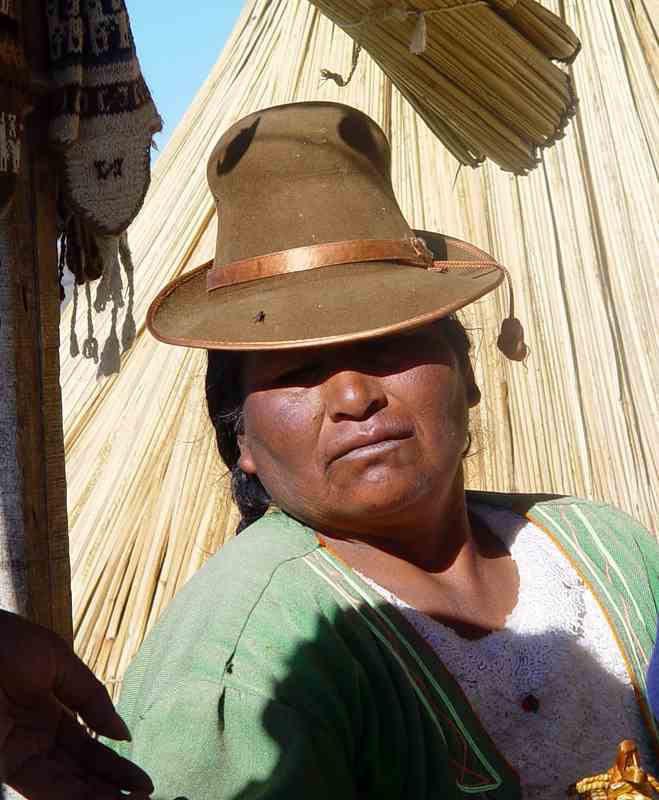
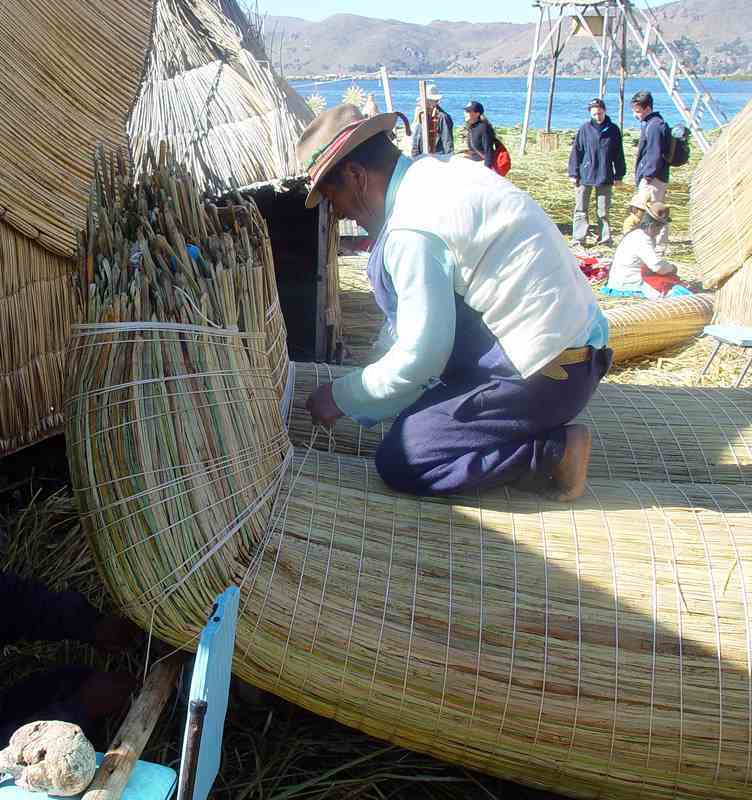
We visited Totora Island and Torani Pata Island.
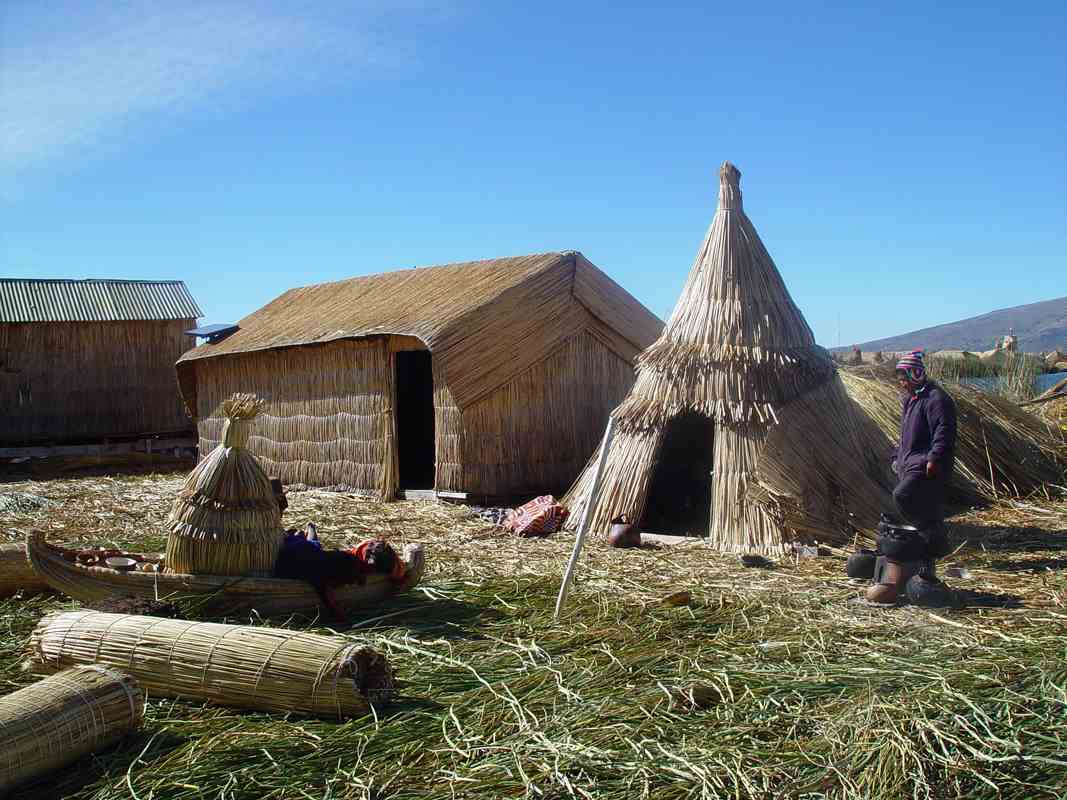
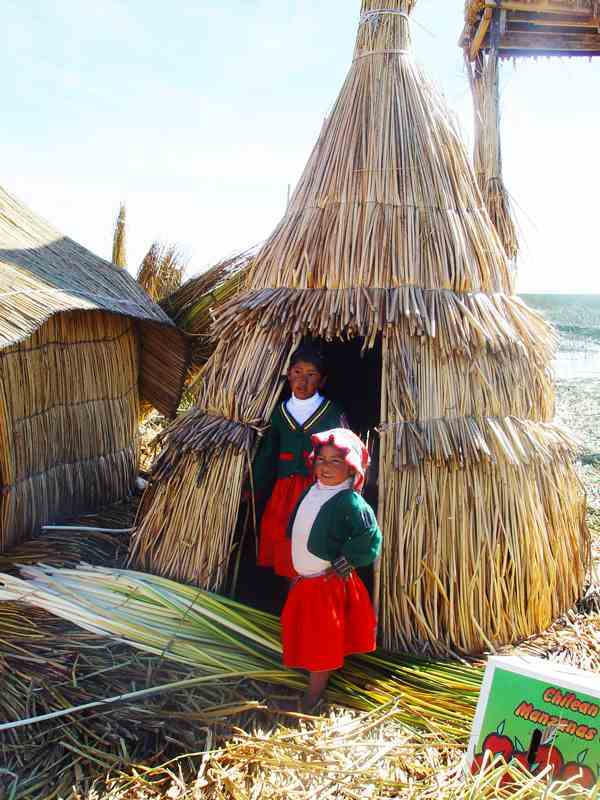
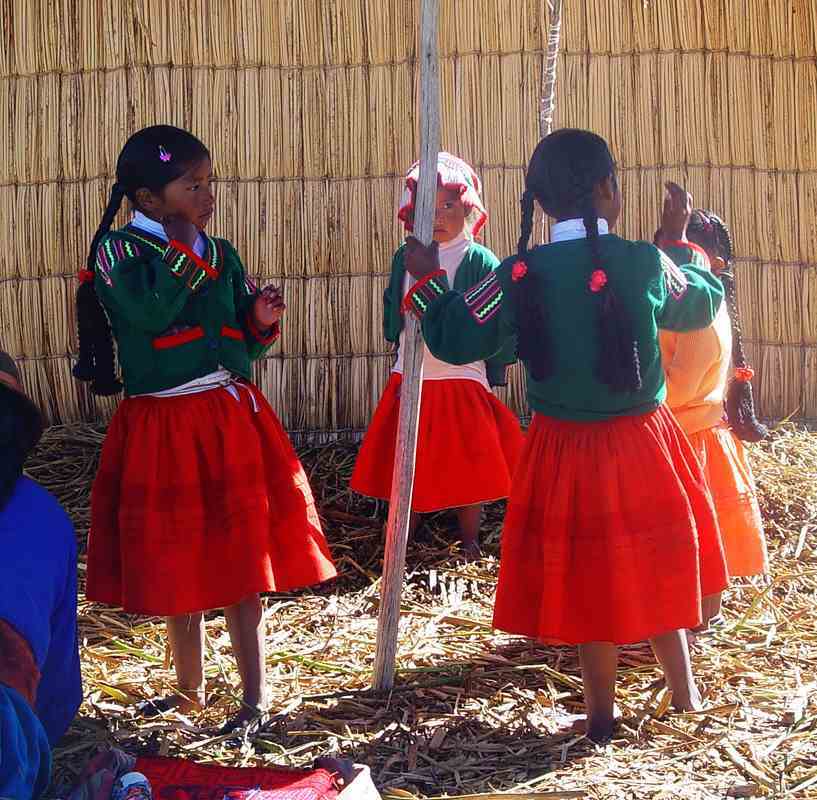
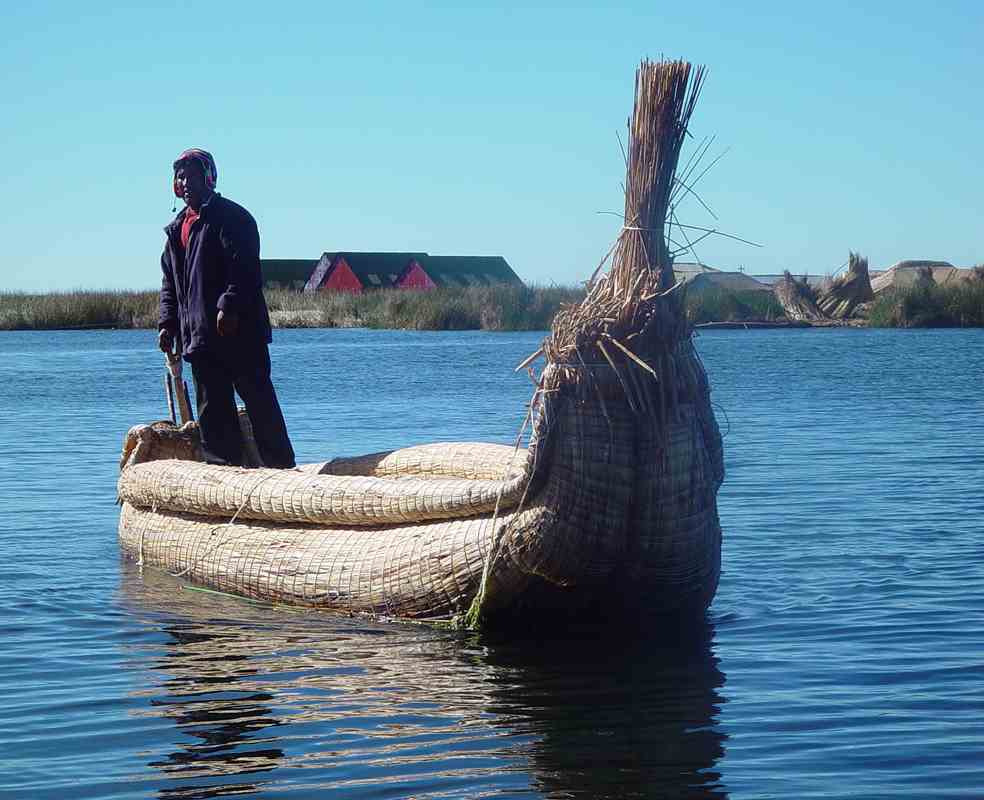
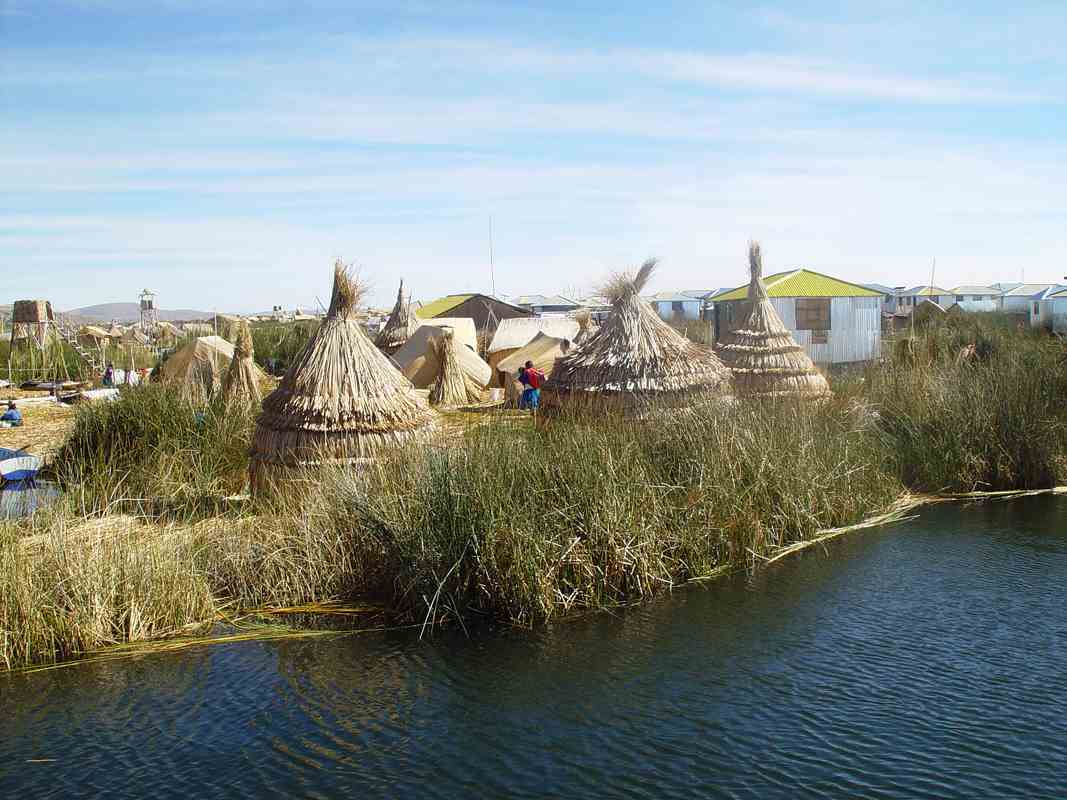
Visiting these islands was a unique experience.

We had a 2½ hour boat trip from the floating islands to Taquile Island.
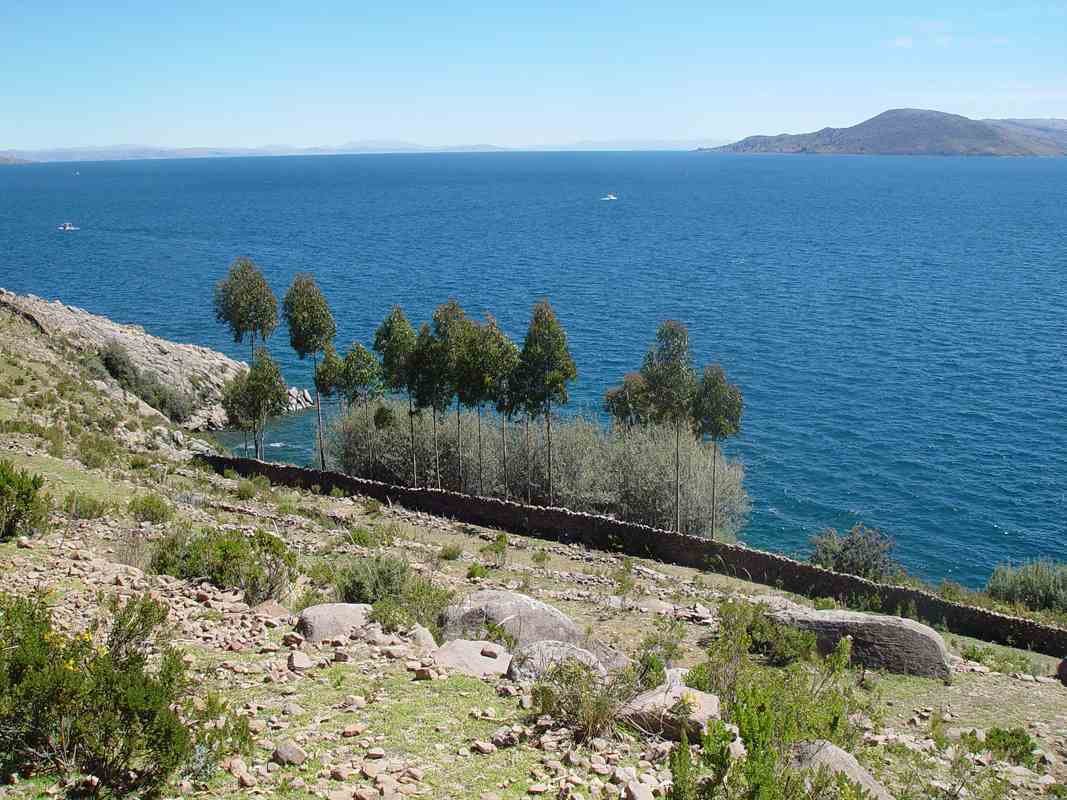
Most people climb the 600 stone steps to reach the hub of the island.
However our guide, Mario, took us around a winding path.
It was tough going at the high altitude (3827+ metres).

The snow capped mountains of Bolivia across Lake Titicaca.
We did not go to Bolivia.
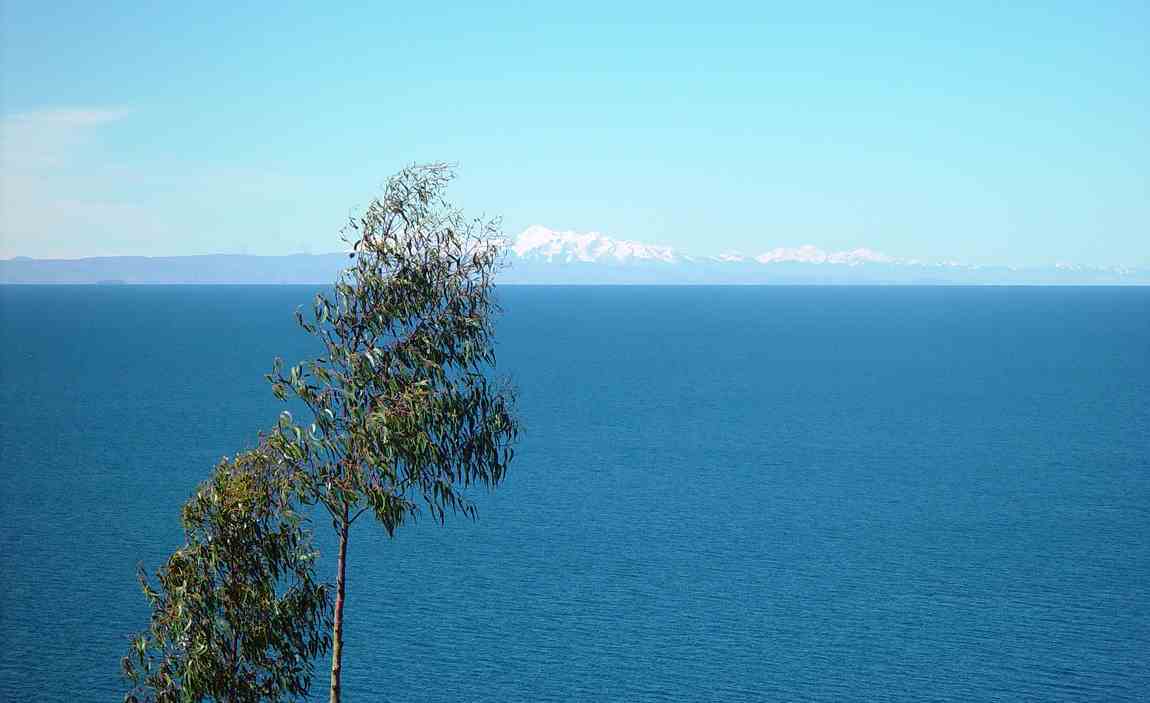
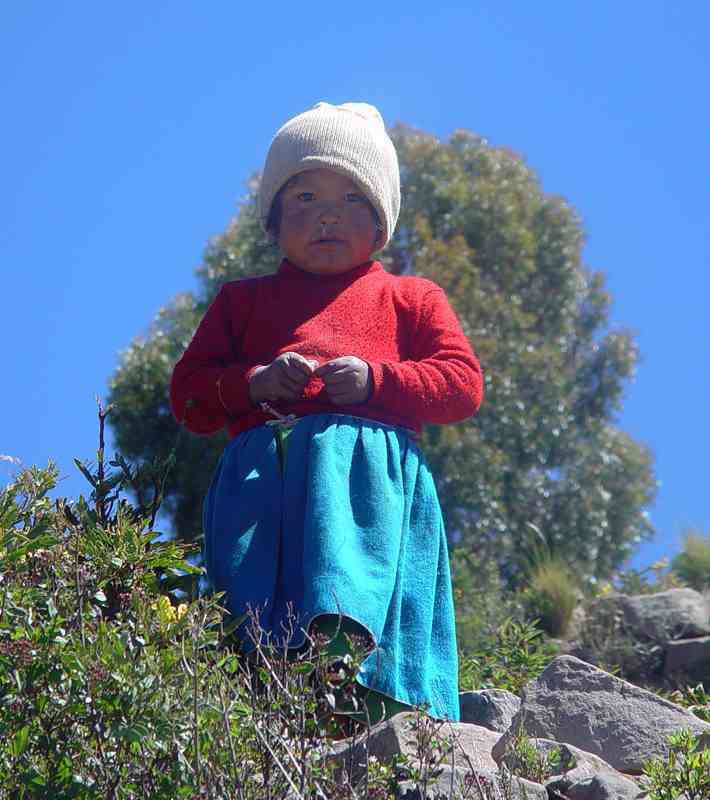
Men do the knitting here too.
Married men have a patterned, knitted cap and a wide belt which they have woven.
The belt incorporates their wife's hair, a new piece woven for each year married.
Unmarried men have a white pointed hat and a plain belt.
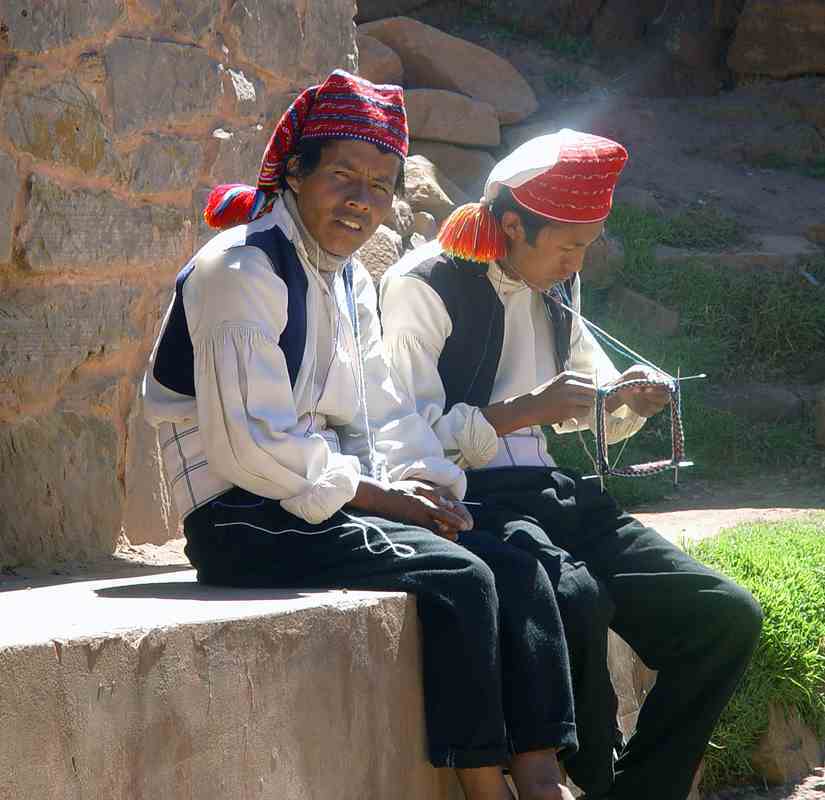
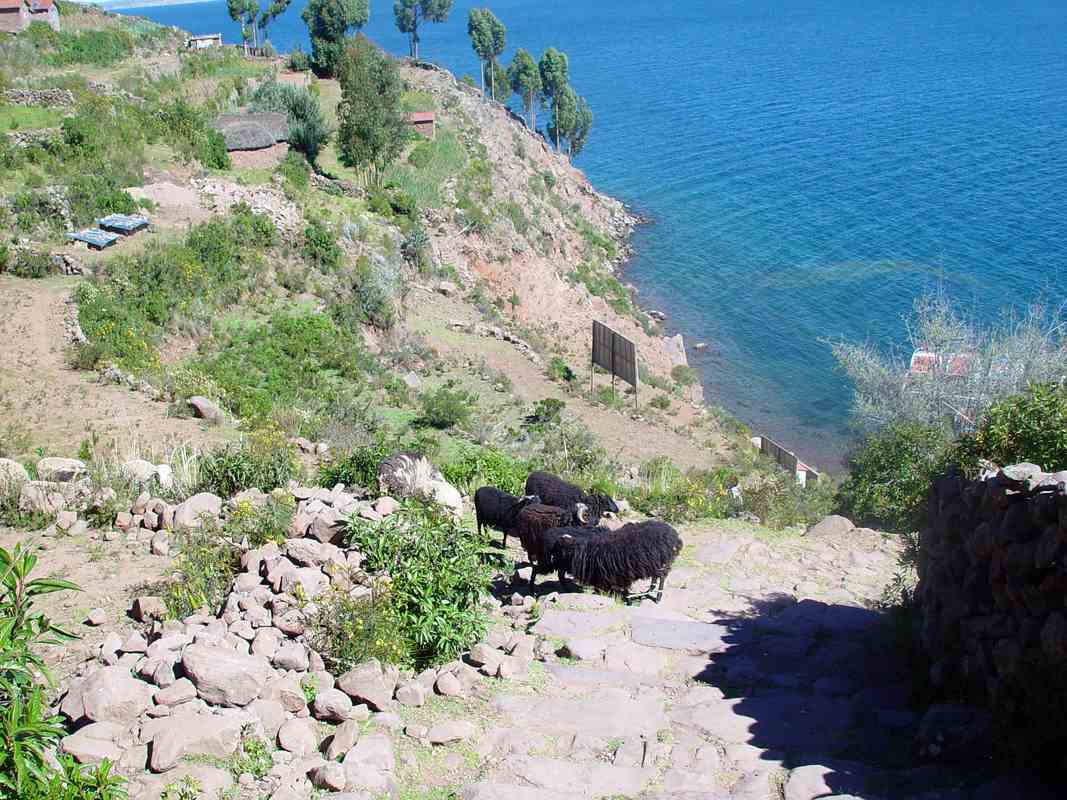
Mario, our guide, helped Margaret on the way down the 600 stone steps.
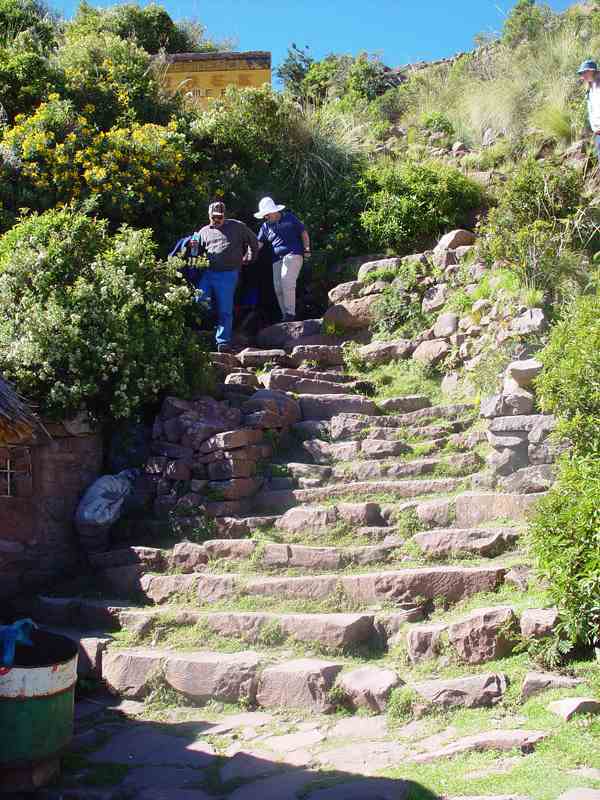
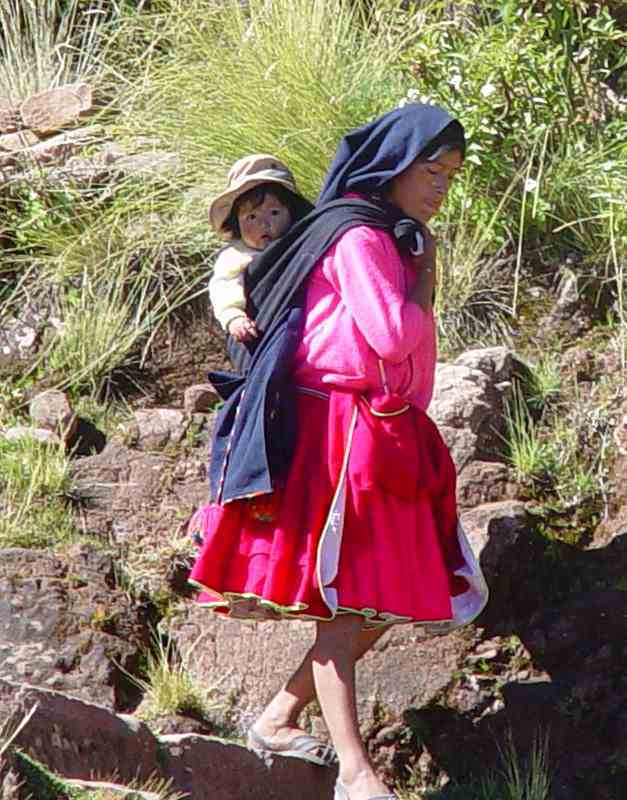

In April-May 2004 we had our third around-the-world trip. In 54 days we travelled to Auckland, Tahiti, Easter Island,
Santiago, Lima, Arequipa, Colca Canyon, Sillustani, Lake Titicaca, Puno, Cusco, Sacsayhuman, Tambomachay, Machu Picchu, Aguas Calientes,
Sacred Valley, Ollantaytambo, Posada Amazonas, Ica, Nazca, Paracas, Ballestas Islands, Buenos Aires, Iguazu Falls, Itaipu Dam,
Rio de Janeiro, London, St. Petersburg and Singapore.
After flying from Arequipa to Juliaca and visiting the Sillustani ruins, we stayed at Puno on the edge of Lake Titicaca.
Lake Titicaca is a large, deep lake in the Andes on the border of Peru and Bolivia, often called the "highest navigable lake" in the world.
The "highest navigable lake" claim is generally considered to refer to commercial craft.
Numerous smaller bodies of water around the world are at higher elevations.
By volume of water and by surface area, it is the largest lake in South America.
Other cultures lived on Lake Titicaca prior to the arrival of the Incas.
In 2000, a team of international archaeologists found the ruins of an underwater temple, thought to be between 1,000 and 1,500 years old,
perhaps built by the Tiwanaku people.
From Puno we went on an all-day boat tip on the lake.
Firstly to the Uros Floating Islands.
These "Floating Islands" are small, man-made islands constructed by the Uros people from layers of cut totora,
a thick, buoyant reed that grows abundantly in the shallows of Lake Titicaca.
The islands are anchored and are moved from time to time.
The islands are about 4km from Puno. About 400 people live on the islands.
Always a small tribe, they began their unusual floating islands to isolate themselves from the Collas and the Incas.
Their dwellings are also made from the totora reed.
They have a school on one of the islands. We saw the children going to school by boat.
The school boat and school.

We visited Totora Island and Torani Pata Island.
Visiting these islands was a unique experience.
We had a 2½ hour boat trip from the floating islands to Taquile Island.
Most people climb the 600 stone steps to reach the hub of the island.
However our guide, Mario, took us around a winding path.
It was tough going at the high altitude (3827+ metres).
The snow capped mountains of Bolivia across Lake Titicaca.
We did not go to Bolivia.
Men do the knitting here too.
Married men have a patterned, knitted cap and a wide belt which they have woven.
The belt incorporates their wife's hair, a new piece woven for each year married.
Unmarried men have a white pointed hat and a plain belt.
Mario, our guide, helped Margaret on the way down the 600 stone steps.